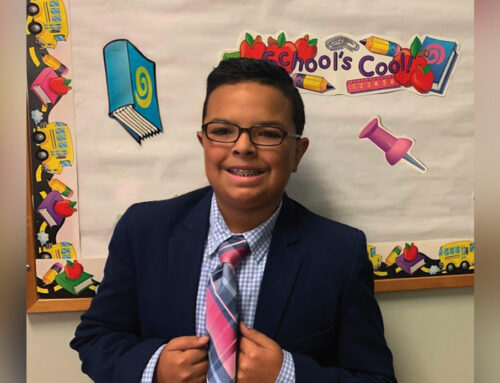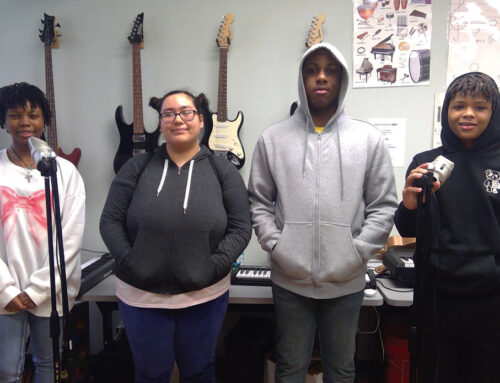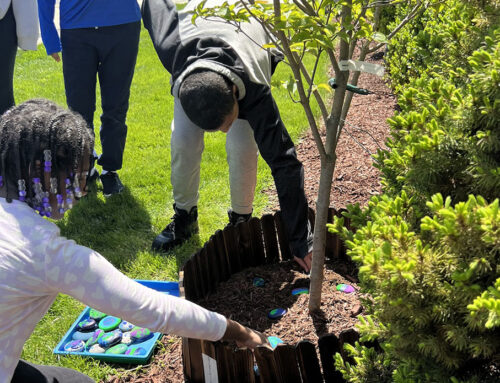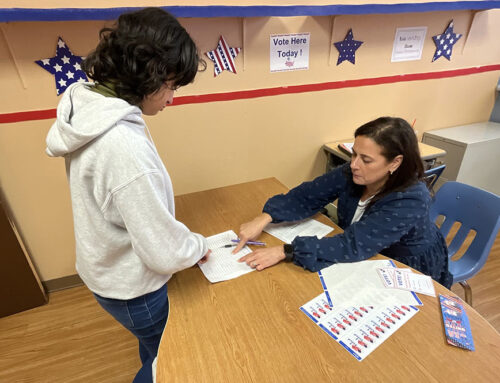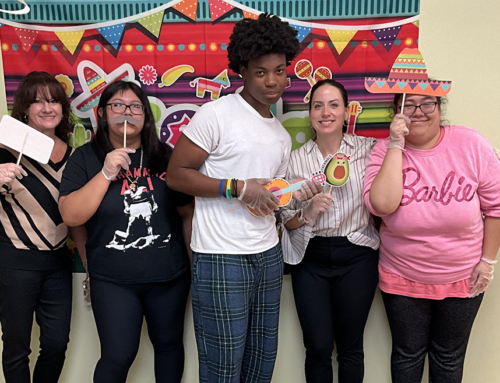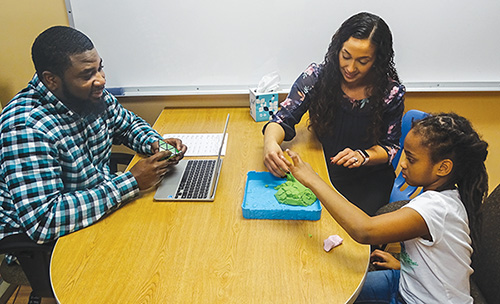
In the Reflection Room, Matthew Clerk, left, and Eva Payano-Rivera, center, work with a student as she uses skills to self-regulate.
Sometimes, when a student is upset, they just need a safe place to stop, take a break, and reflect. The Reflection Room at Westbridge Academy was established this fall to offer an additional therapeutic layer of intervention for students. It offers a calm, supportive therapeutic environment away from the social and instructional pressures of the classroom where students can go to cool off, manage frustrations and take a break.
To be clear, the Reflection Room is not a ‘time out’ or seclusion practice – in fact, it is the opposite, in that the student benefits from direct staff attention and support. It is a space for crisis intervention staff to help a student de-escalate a potentially explosive situation before they need more support or physical containment. There, staff talk, listen, or simply, “hold space” as students process complex emotions and problem-solve. It gives students the opportunity to use developing skill sets before they lose control.
The idea was borne out of a conversation between Dr. Viviana Litovsky, Executive Director and Matthew Clerk, a paraprofessional at the school who was recently honored by ASAH.
“We want to support our students as they learn to recognize their own feelings and emotions before they lose the ability to self-regulate, and become a danger to self or others. It is a therapeutic space, an instructional space, and a student-centered space,” said Dr. Litovsky. “Students like the name and are beginning to incorporate it into their language.”
At any time, students can ask to go to the Reflection Room, or staff might suggest it. According to Dr. Litovsky, the early data are very promising, with fewer students being referred to administrative offices and fewer students needing more intensive interventions. “We have found that it helps reduce the incidence of crisis,” added Eva Payano-Rivera, a clinician at Westbridge Academy. “It gives students the chance to regroup, regain classroom readiness and get back to learning.”
Payano-Rivera and others at Westbridge see the Reflection Room as another way for students to build resiliency, and use social and emotional problem-solving skills. “As they learn to self-regulate, and use strategies they have learned, students become empowered and gain confidence, rather than feeling out of control,” concluded Payano-Rivera.




